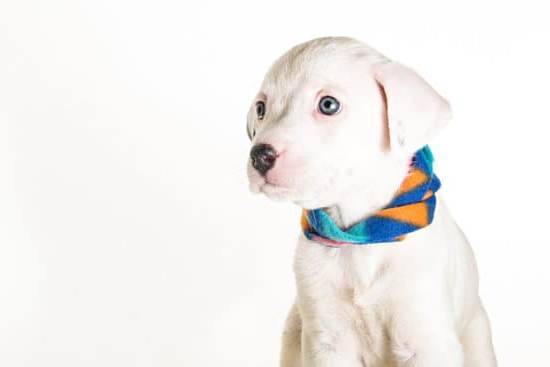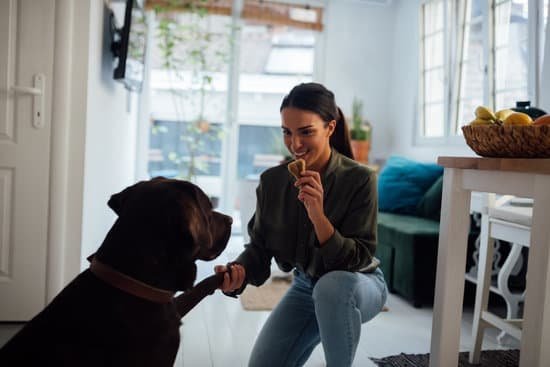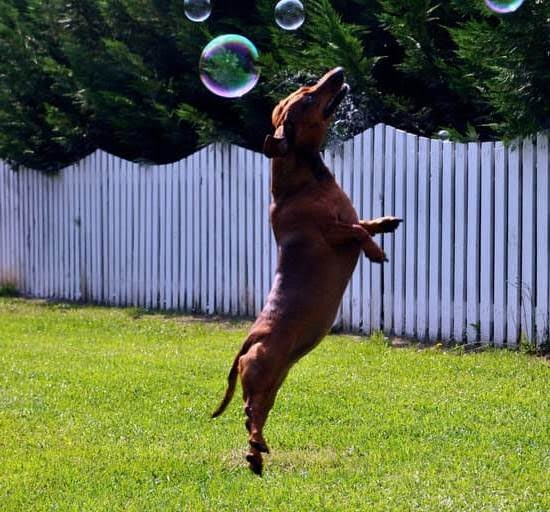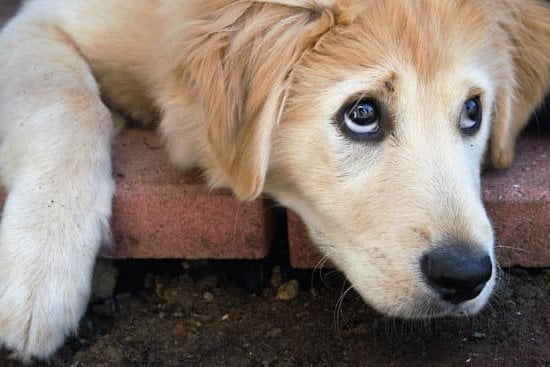Are you wondering how to train your dog to use training pads? Training pads are an essential tool for potty training your furry friend, especially if you live in an apartment or have limited access to outdoor spaces. In this article, we will explore the purpose of training pads and the benefits of using them for dog training.
Training pads serve as a convenient and hygienic solution for managing your dog’s potty needs indoors. Whether you have a new puppy or an older dog learning new habits, training pads provide a designated spot for your pet to relieve themselves while minimizing mess and odors in your home. Understanding the purpose of training pads is crucial in effectively teaching your dog proper potty habits.
Using training pads for dog training offers several benefits, including convenience, flexibility, and peace of mind. When used correctly, training pads can help streamline the potty training process and provide a consistent routine for your canine companion.
Additionally, they can be particularly useful during extreme weather conditions or times when outdoor access is limited. By familiarizing yourself with the purpose and benefits of using training pads, you can make the most of this valuable tool in your dog’s training journey.
Getting Started
Training pads are a convenient and effective tool for potty training your dog, especially if you live in an apartment or have limited outdoor space. However, it’s important to choose the right type of training pads for your dog and set up a designated area for training to ensure success in the potty training process.
When choosing training pads for your dog, consider factors such as size, absorbency, and odor control. There are disposable and washable/reusable options available, so choose the one that best fits your lifestyle and preferences. It’s also important to select the right size of training pad for your dog – larger breeds may require bigger pads to accommodate their needs.
Setting up a designated area for training is crucial in creating a consistent environment for your dog to learn where to go potty. Choose a quiet and easily accessible area in your home, away from your dog’s eating and sleeping areas. This will help them understand that this is the designated spot for potty breaks.
To make it easier for both you and your dog, here are some tips on setting up a designated area:
- Place the training pad in a specific location within the designated area
- Use barriers or gates to define the area
- Provide easy access to the area at all times
By choosing the right type of training pads and setting up a designated area for training, you can create an optimal environment for teaching your dog where to go potty. These initial steps are essential in laying the foundation for successful potty training using training pads.
Potty Training Basics
Consistency and positive reinforcement are key components of successful potty training for dogs. When it comes to using training pads, it’s important to establish a routine and stick to it. Dogs thrive on consistency, so creating a structured schedule for potty breaks will help them understand where and when they should use the training pads. This means taking your dog to the designated potty area at regular intervals throughout the day, especially after meals, playtime, and naps.
Positive reinforcement is also essential for encouraging your dog to use the training pads. Whenever your dog successfully uses the pad, offer plenty of praise, treats, and affection. This will create a positive association with using the training pad and motivate your dog to continue doing so. Punishing or scolding your dog for accidents can have negative effects and may lead to anxiety or confusion about the potty training process.
In addition to consistency and positive reinforcement, patience is crucial when potty training a dog to use training pads. Some dogs may learn quickly, while others may take more time to grasp the concept. It’s important to remain patient and understanding throughout the process, as getting frustrated or impatient can hinder your dog’s progress. By maintaining a positive and supportive attitude, you’ll create an environment that encourages learning and success.
| Key Components | Description |
|---|---|
| Consistency | Create a structured potty break schedule |
| Positive Reinforcement | Offer praise, treats, and affection for using the training pad |
| Patience | Maintain a positive and supportive attitude throughout the process |
Introducing the Training Pad
Creating a Positive Association
To introduce your dog to the training pad, start by placing it in a designated area where your dog typically goes potty. Encourage your dog to explore the pad and sniff it. When your dog shows interest in the pad, praise and reward them with treats or verbal praise. This helps create a positive association with the training pad.
Guiding Your Dog
When you notice that your dog is about to go potty, gently guide them towards the training pad. If they start to eliminate off the pad, quickly but calmly move them onto it. Once they finish on the pad, be sure to give lots of praise and treats as a reward for using it correctly. This reinforces the behavior and encourages your dog to use the training pad in the future.
Consistency Is Key
Consistency is crucial when teaching your dog to use training pads. It’s important to take your dog to the pad frequently, especially after meals, naps, and playtime, as these are common times for dogs to need to go potty. By consistently guiding your dog to use the training pad and rewarding them for doing so, they will quickly learn what is expected of them. Remember that accidents will happen during this process, so patience and understanding are essential.
By following these steps and being patient, you can effectively train your dog to use training pads. Consistent positive reinforcement and gentle guidance will help your dog understand where they should go potty, making the potty training process much smoother for both you and your furry friend.
Managing Accidents
Accidents are bound to happen during the process of training your dog to use training pads. It’s important to remain patient and calm when dealing with accidents, as getting frustrated or angry can confuse and stress out your dog. When accidents occur, it’s essential to immediately clean up the mess and provide gentle guidance for your pet.
One of the most effective ways to handle accidents is by using positive reinforcement. Instead of scolding or punishing your dog, praise them when they use the training pad correctly. This will help them understand what behavior is desired and encourage them to continue using the pads for potty training.
In addition to positive reinforcement, it’s crucial to thoroughly clean up any accidents. Use a pet-friendly cleaner to eliminate any odors and stains left behind by the accident. This is vital for preventing your dog from being drawn back to the same spot and encouraged to repeat the unwanted behavior.
When accidents occur, take note of any patterns or triggers that may have contributed to the mishap. By identifying these factors, you can work on addressing them and avoiding future accidents. With patience, consistency, and proactive cleanup measures, you can effectively manage accidents during the training process of how to train a dog to use training pads.
Gradual Transition
Transitioning to Outdoor Potty Training
Once your dog has become consistently successful in using the training pads, it’s time to start transitioning them to outdoor potty training. This transition should be done gradually to avoid confusion and setbacks in your dog’s potty training progress. Start by moving the training pad closer to the door that leads outside. This will help your dog associate the act of going potty with being near the outdoor potty area.
Establishing a Routine
It’s important to establish a consistent schedule for taking your dog outside for potty breaks. Take your dog out first thing in the morning, after meals, before bedtime, and whenever they wake up from a nap. Use verbal cues such as “go potty” or “do your business” to encourage your dog to do their business outdoors.
Positive Reinforcement
As you transition from using training pads to outdoor potty training, continue to use positive reinforcement techniques such as praise, treats, and affection when your dog successfully goes potty outside. This will help reinforce the behavior and motivate your dog to continue using the outdoor potty area.
Remember that patience and consistency are key when transitioning your dog from using training pads to outdoor potty training. Gradually phasing out the use of training pads and guiding your dog toward incorporating outdoor potty breaks into their routine will ultimately lead to a successful transition.
Troubleshooting
Training your dog to use training pads can be a challenging process, and it’s not uncommon to encounter some common challenges along the way. However, with patience and persistence, these issues can be addressed effectively. Here are some common challenges that dog owners may face when training their dogs to use training pads, along with helpful solutions:
- Refusal to Use Training Pads: Some dogs may initially refuse to use the training pads, especially if they are used to eliminating outdoors. In such cases, it is important to use positive reinforcement, such as treats and praise, to encourage the dog to use the training pad. Additionally, placing the training pad in an easily accessible and designated area can help reinforce its purpose.
- Accidents Outside of Designated Area: Another common issue is when dogs have accidents outside of the designated area where the training pads are placed. To address this issue, it’s essential to supervise your dog closely and redirect them to the training pad area immediately after any accidents occur. Consistency in directing your dog back to the designated spot will help reinforce their understanding of the appropriate location for elimination.
It’s important for dog owners to remember that every dog is unique, and may respond differently to potty training methods. With patience and consistent reinforcement, most dogs can be successfully trained to use training pads.
In addition, remember that professional help is always available from a veterinarian or a professional dog trainer if you’re struggling.To further improve your potty-training skills you can seek expert opinion on how (to train the) a dog(,) (to) manage separation anxiety or other types of behavioral issues as well as(give you) practical tips for using puppy pee pads.
Celebrating Success
As you progress through the training process, it’s important to recognize and celebrate your dog’s successes in using training pads effectively. Whether your dog is consistently using the pads or showing improvement, taking the time to acknowledge their progress can be a great motivator for both you and your furry friend.
Positive reinforcement plays a crucial role in potty training, so be sure to praise and reward your dog when they use the training pad successfully. This will help reinforce the desired behavior and encourage them to continue using the pads.
It’s also important to remember that every dog learns at their own pace, so be patient and understanding throughout the training process. Some dogs may take longer to grasp the concept of using training pads, while others may catch on quickly.
By remaining consistent with your training methods and offering plenty of encouragement, you can help your dog build confidence and develop good potty habits. Remember that it’s okay to celebrate even small victories along the way, as they all contribute to your dog’s overall progress.
In addition to celebrating your dog’s successes, don’t forget to acknowledge your own achievements as well. Successfully training a dog to use training pads requires time, effort, and dedication on your part.
So give yourself a pat on the back for any milestones you reach during the potty training process. Ultimately, by staying committed and positive throughout this journey, you can help ensure that both you and your beloved pet have a successful experience with using training pads for potty training purposes.
Frequently Asked Questions
How Do I Get My Dog to Use a Pee Pad?
To get your dog to use a pee pad, you can start by placing the pad in a designated area and encouraging your dog to use it. Consistency is key, so be patient and reward your dog for using the pad.
Can You Train a Dog to Use Pee Pads and Go Outside?
Yes, it’s possible to train a dog to use pee pads indoors and go outside. This method is helpful for times when your dog can’t go outside due to weather or your absence. It requires consistent training and positive reinforcement.
How Long Does It Take for a Dog to Be Pad Trained?
The time it takes for a dog to be pad trained varies depending on factors such as the dog’s age, previous potty training, and consistency in training methods. Generally, it can take anywhere from a few weeks to a few months for a dog to be fully pad trained.

Welcome to the blog! I am a professional dog trainer and have been working with dogs for many years. In this blog, I will be discussing various topics related to dog training, including tips, tricks, and advice. I hope you find this information helpful and informative. Thanks for reading!





